
Contact
Børge Holte
(biology/cruise leader)
+47 916 30 856
Valérie Bellec
(geology)
Beate Hoddevik Sunnset
(communication advisor)
+47 908 21 630
+47 55 23 85 16

Published: 07.10.2013 Updated: 08.10.2013
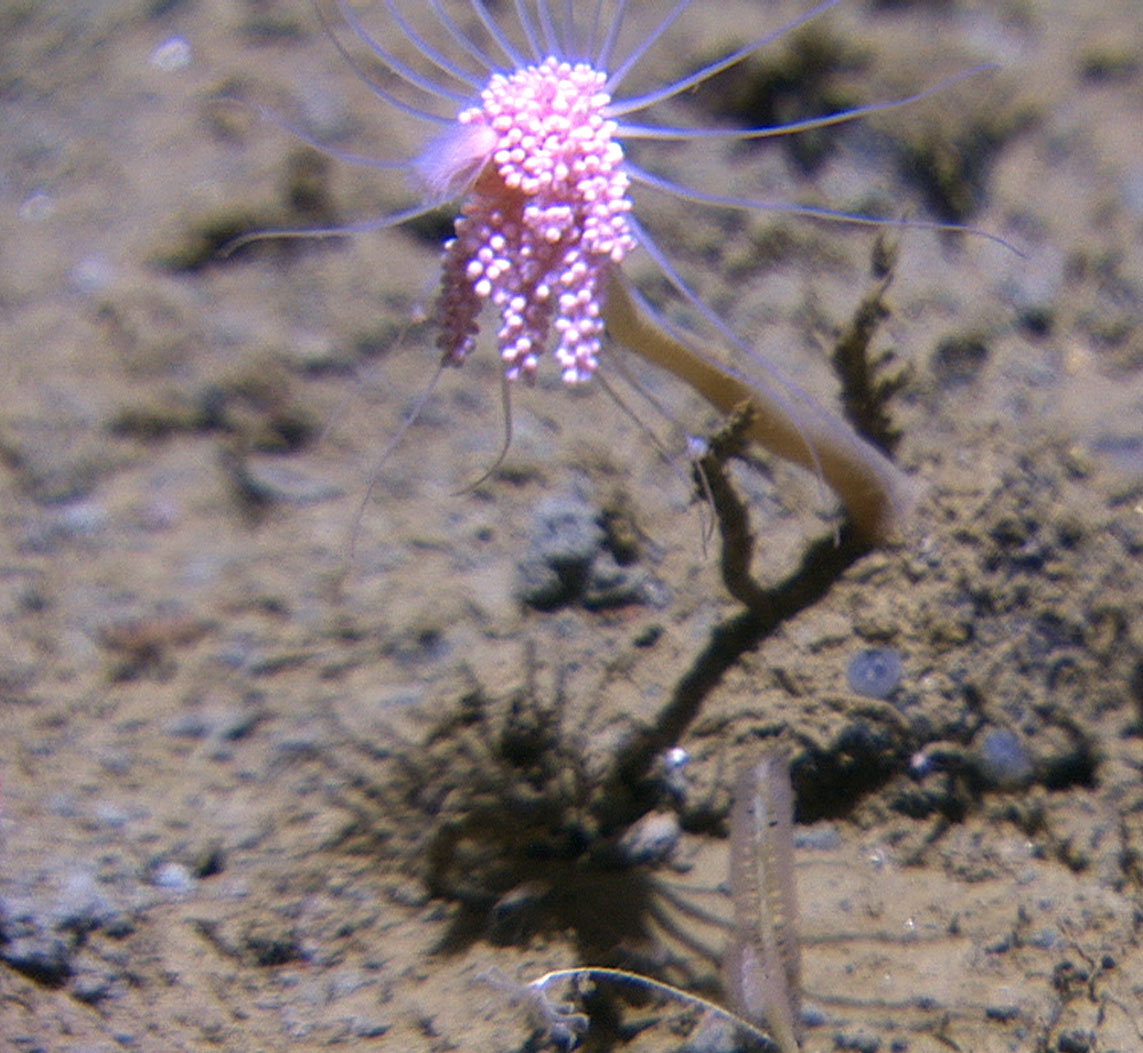
At a depth of around 1.000 meters down the slope off the Mørebankene we were met by a "flower forest" of the hydroid Corymorpha.
Also the second part of the MAREANO autumn survey has provided exciting discoveries. While the geologists from NGU have shown great interest for old avalanche landscapes in the quite steep and deep shelf slope off Mørebanken (see figure below), the biologists from IMR were – among other findings – fascinated by deep sea forests of "tulips flowers" (the hydroid Corymorpha) and quite diverse sponge-dominated areas. The hard and compact sediments in the slide-areas form attachment points for animals that usually thrive on bedrock, as seen in the image below for the deep water occurring brittle star Gorgon´s head (Gorgonocephalus medusa).
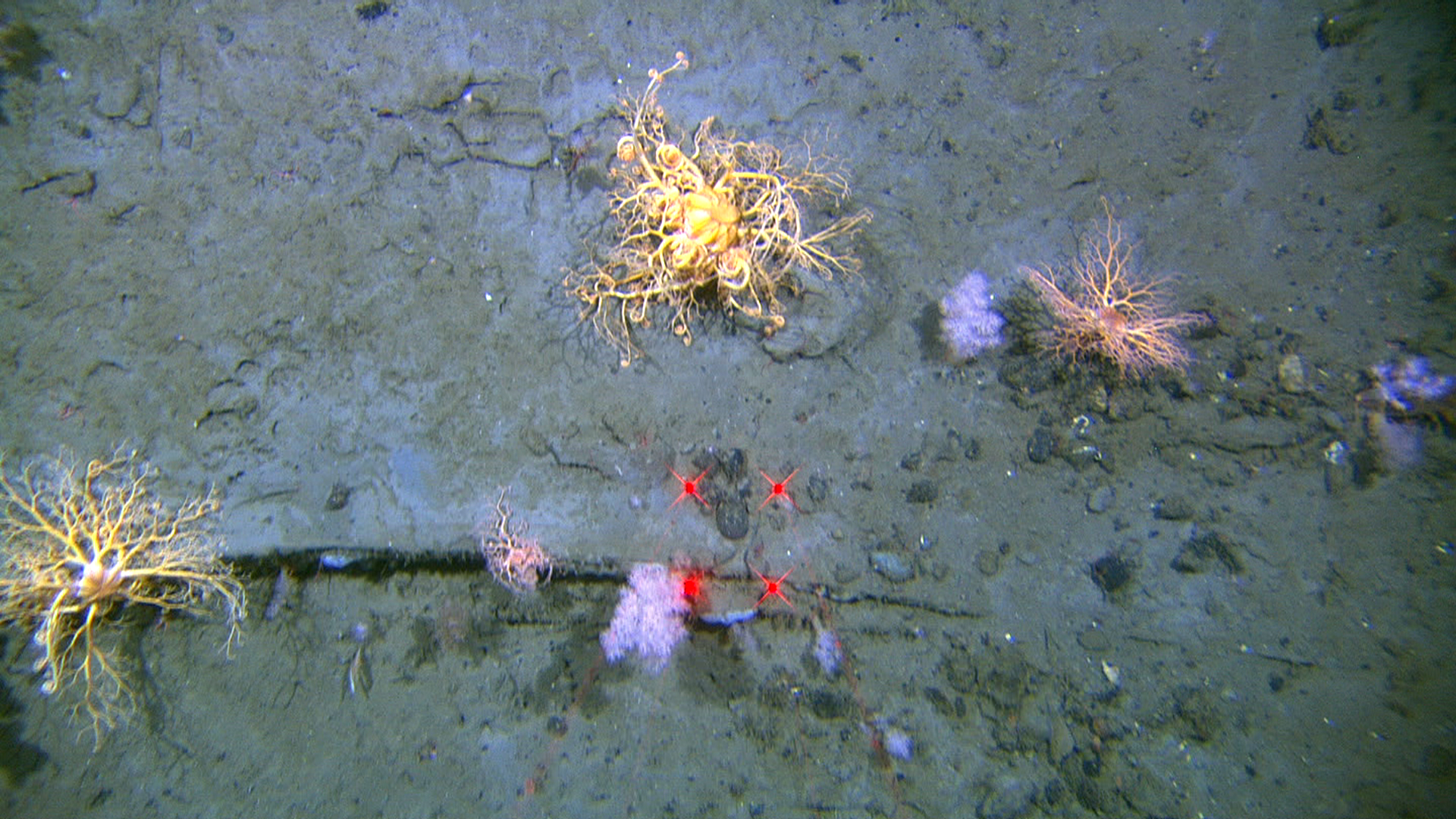
Fauna that usually prefer rocky bottom (here: Gorgon´s head, soft corals) using walls of slide deposits at a depth of 700 meters consisting of blocks of compacted sediments.
Altogether, the findings provide us with knowledge about the habitats and ecosystems that exist on and around Mørebankene, where the herring has its main spawning area. This knowledge would, however, not be available without the depth- and terrain mapping conducted in advance of the ongoing survey by the third MAREANO partner, the Norwegian Hydrographic Service.

Part of the area surveyed during the 2nd leg of the autumn cruise. Black lines are video stations. The red line corresponds to the 2 pictures below. (1) Continental shelf, (2) Slide area showing a lot of ridges of compacted sediments where stones often occur, (3) Slide area showing a smooth seafloor indicating the deposition of soft sediments like mud.
Another eye-catching and rare field-observation was made of how a particular group of polychaete worms belonging to the family Serpulidae, extremely fast withdraws into its calcareous tube-house if a danger threatens. The animal even closes its portable door and locks it properly. This worm is a few centimeters long, collecting food particles using its crown that showed up when we landed the video rig after running a 700-meter long video line. The crown is shown in the picture below together with a small round 2-3 mm wide plate-like object in front of the crown – the door.

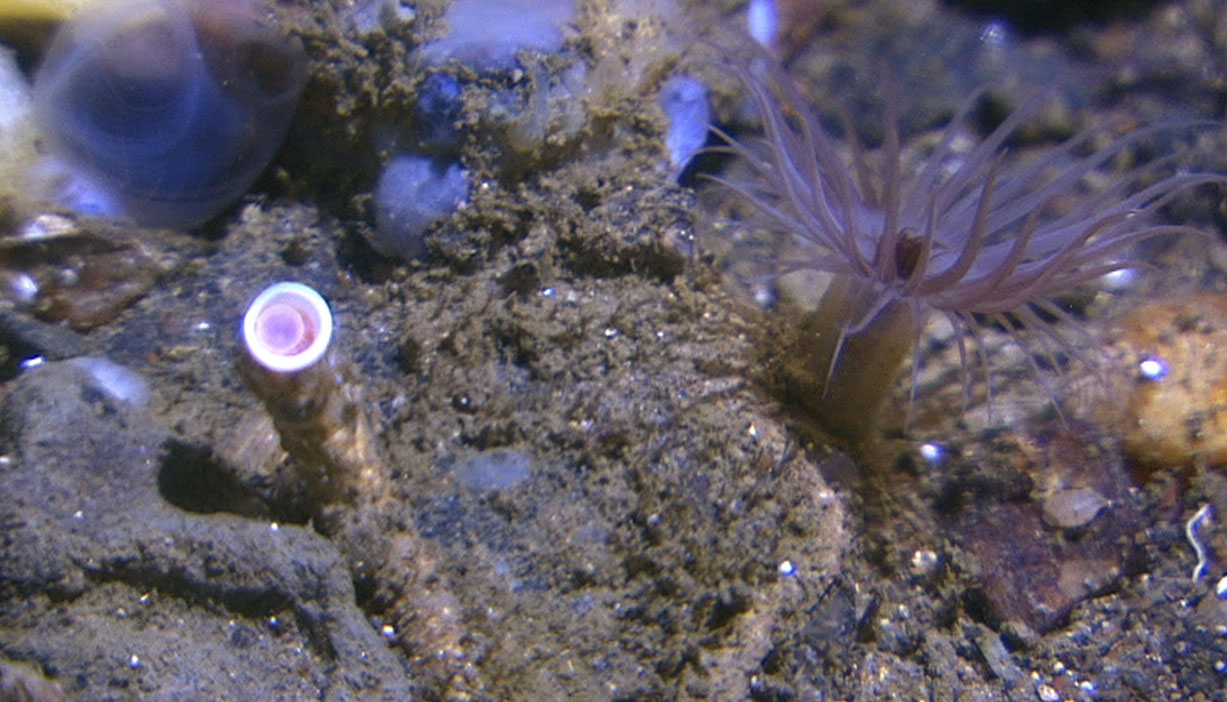
The pictures show how a polychaete worm belonging to the family Serpulidae instantly redraws into its calcareous tube. Just as quickly, the animal locks the tube with its 2-3 mm wide door that perfectly match the tube opening.
Despite interesting nature observations the most dramatic incident occurred when our precious video rig overturned due to strong bottom currents upward along the shelf edge. Fortunately, after some thrilling minutes our rig operators got it on track without damage to the many attached instruments.
The benthic invertebrate communities at the shallow shelf show greater species diversity than the communities at depths of e.g. 1,000 meters where the animals are adapted to temperatures around zero degrees C, and even sub-zero temperatures, and also are adapted to a restricted food supply from the surface waters.
Many of the deepwater invertebrates are filtering out small food particles that over time have fallen down from the productive surface waters to the benthic environment and spread out by water currents. One such example of food filtering is the sea lily (Crinoida) that often find an elevated position in the terrain to reach optimal currents bringing food particles towards its "fish-net"-like arms. The picture below typically shows that sponges may serve as a living substrate for e.g. sea lilies. The sponges are complementary to most other filtering groups of benthic invertebrates in that they filter out extremely small bacteria-sized particles while e.g. the sea lilies filter out larger particles.
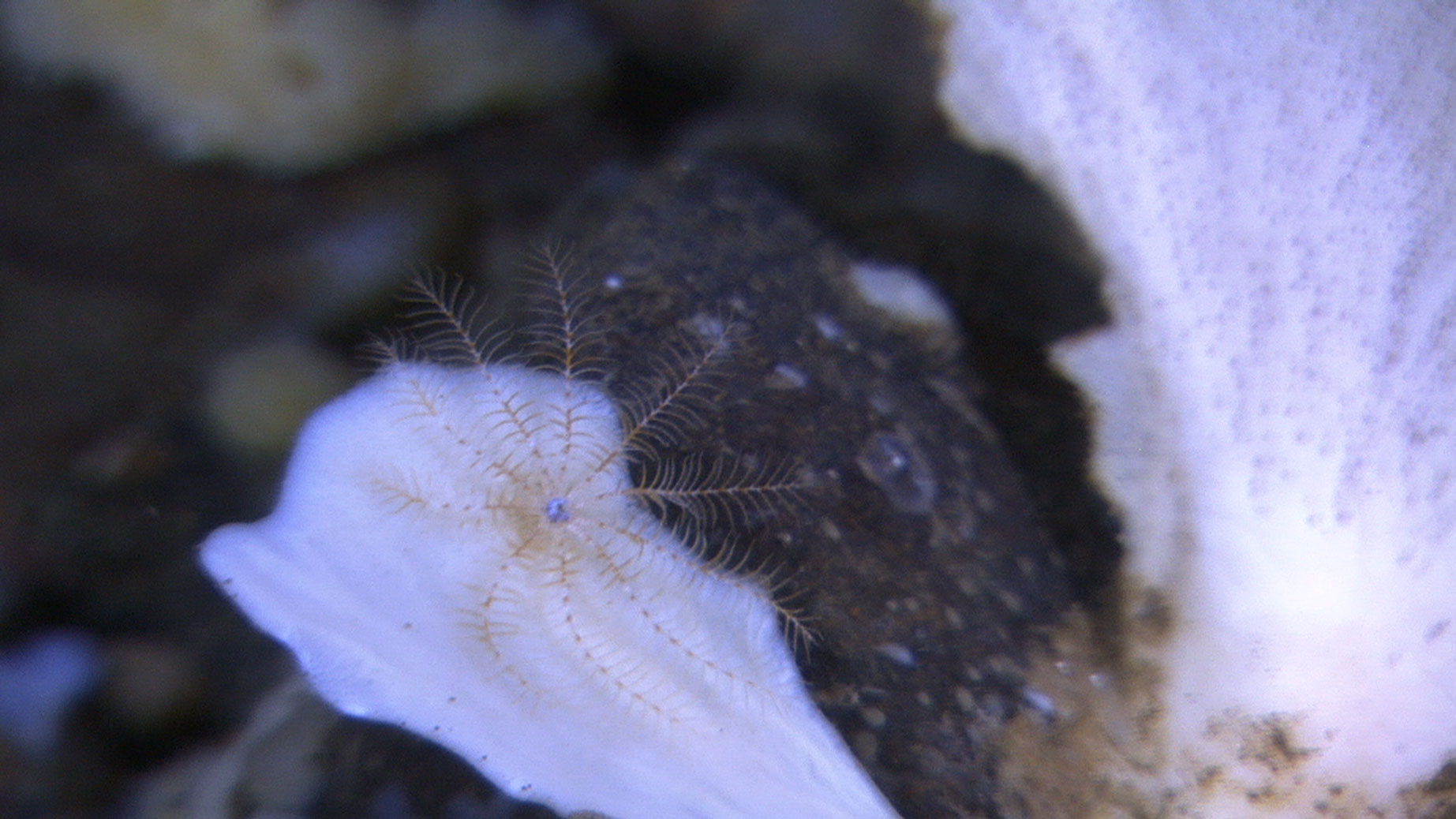
The sea lily to the left has found an elevated position, exploiting a sponge as substrate to achieve an elevated position to optimize its food catch by filtering out particles from the bottom currents.
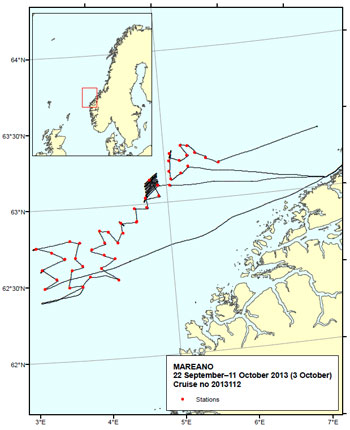
MAREANO´s sampling stations off the Mørebankene during the autumn survey in October 2013.